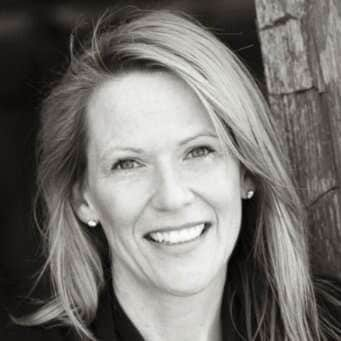Disrupting Traditional Marketing Methods
Sharon MacLeod, VP of Marketing at Unilever
Related Trend Reports
Business, Celebs, Credit Crunch, Eco, Home, Internet, Lifestyle, Live Arts, Market, Pop Culture, Retail, Social Business Disrupting traditional marketing methods is a challenging feat that comes with just as much risk as it does reward, and no one knows this better than Sharon MacLeod, Vice President of Marketing at Unilever. In a recent conversation, MacLeod revealed her method for motivating colleagues and what it takes to build an innovative culture.
Disrupting traditional marketing methods is a challenging feat that comes with just as much risk as it does reward, and no one knows this better than Sharon MacLeod, Vice President of Marketing at Unilever. In a recent conversation, MacLeod revealed her method for motivating colleagues and what it takes to build an innovative culture.4 Questions with Sharon MacLeod
1.How do you motivate your team to come up with good ideas?
I think one of the things I learned early was to really encourage people to get out and be interesting. The more that people are stuck at their desk, stuck in front of a computer screen, the less time they have for thinking and reacting, and they won't be creating as much. Getting the team motivated isn't difficult. They need to be out doing interesting things, like exploring unique areas in the city or engaging with consumers. To get them out of them out of the office is to get them inspired. I can't be the person to provide the inspiration, but I can certainly facilitate it and build it in to their roles.
2. Can you tell me the significance of trend spotting to a company like Unilever?
Trend spotting is something that is super important. It's key to understand the trends that are going to be mainstream. For a large company like Unilever, it takes a while to bring something to market. So when tracking trends, we want to be aware of the ones that will have the most impact.
3. What are the resources you teams uses to spot trends and market innovations?
We go to places where trends start. For instance, with hair care, we're in the salons. They're the experts and that's where hair care trends start before you see them quickly move into retail spaces. Each category has its own focus and method for gathering trends, whether it's coming from online sources, in the real world or through our global insights teams. When one category is on the forefront of the market, those trends can feed into other categories.
4. How do you create a culture of innovation?
First of all, and this goes for any organization, if you want to have a great culture, an innovative culture, the leadership has to endorse it and get behind it. They have to push the agenda of innovation. Then it's about hiring people who have right kind of aptitude and curiosity. You can bring someone on board who is creative and analytical, but who has a certain degree of curiosity. I also think fostering an innovative culture and environment is important when developing a great culture. It's about encouragement and pushing boundaries. Finally, failure has to be understood. It's something that you can be all over them for, but in the end, failure is a chance to learn, and it really has to be allowed in order to succeed.
Featured Articles

Alexander Ludwig, Actor of ‘The Hunger Games’ (INTERVIEW)

Zack Rosenberg, Founder and CEO of DoGoodBuyUs (INTERVIEW)
'Marketplace for Social Good/s'

Stephen King, Founder of SocialBusiness.org (INTERVIEW)
A Place to Find Positive Social Change

Tara Rogerson, Director of Social Enterprise at Evergreen Brick Works (INTERVIEW)

Andreas Sigl, Global Director, Infiniti Formula 1 (INTERVIEW)

Mikael Ohlsson, CEO IKEA Group (INTERVIEW)

Nelly Furtado, Singer & Songwriter (INTERVIEW)

Gary Lipovetsky, CEO of Dealfind (INTERVIEW)

Tony Whitehorn, President & CEO of Hyundai Motor UK (INTERVIEW)